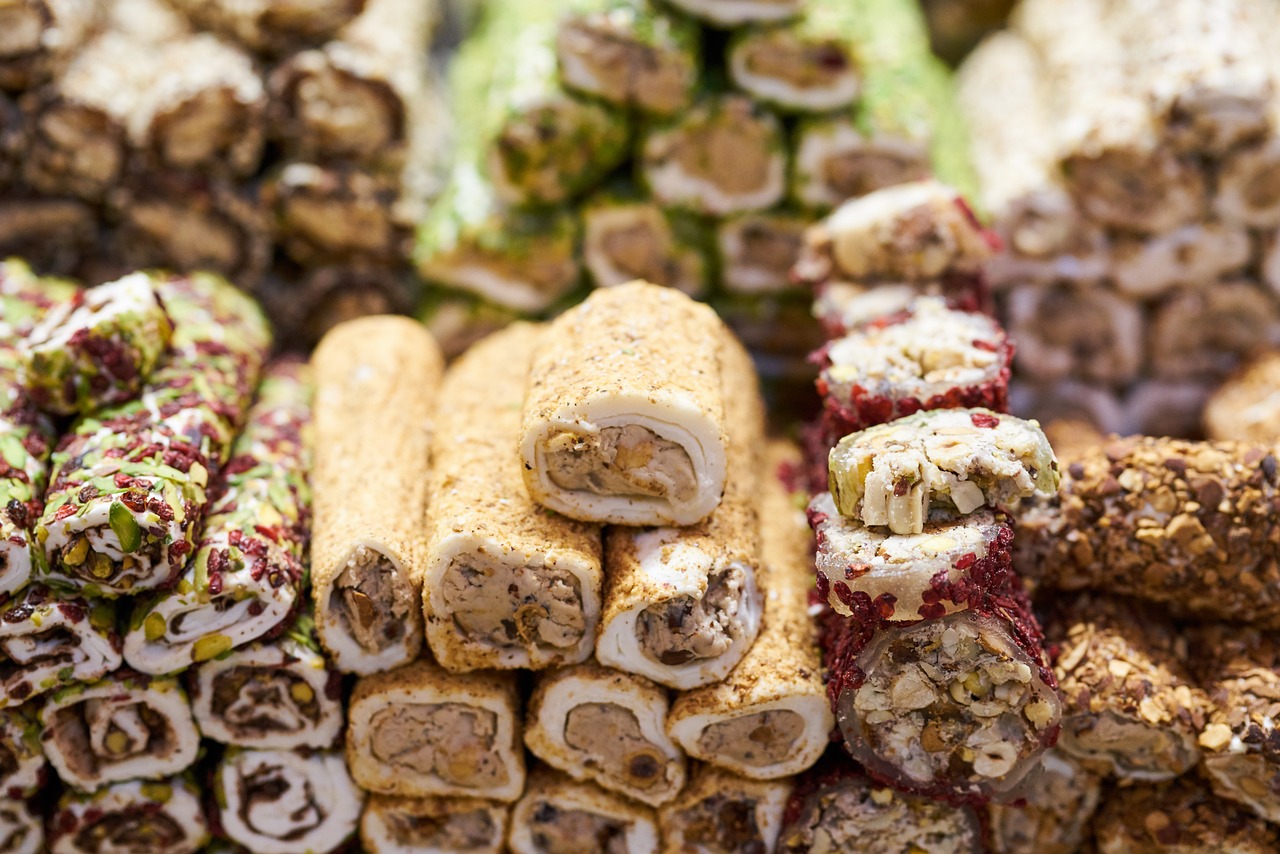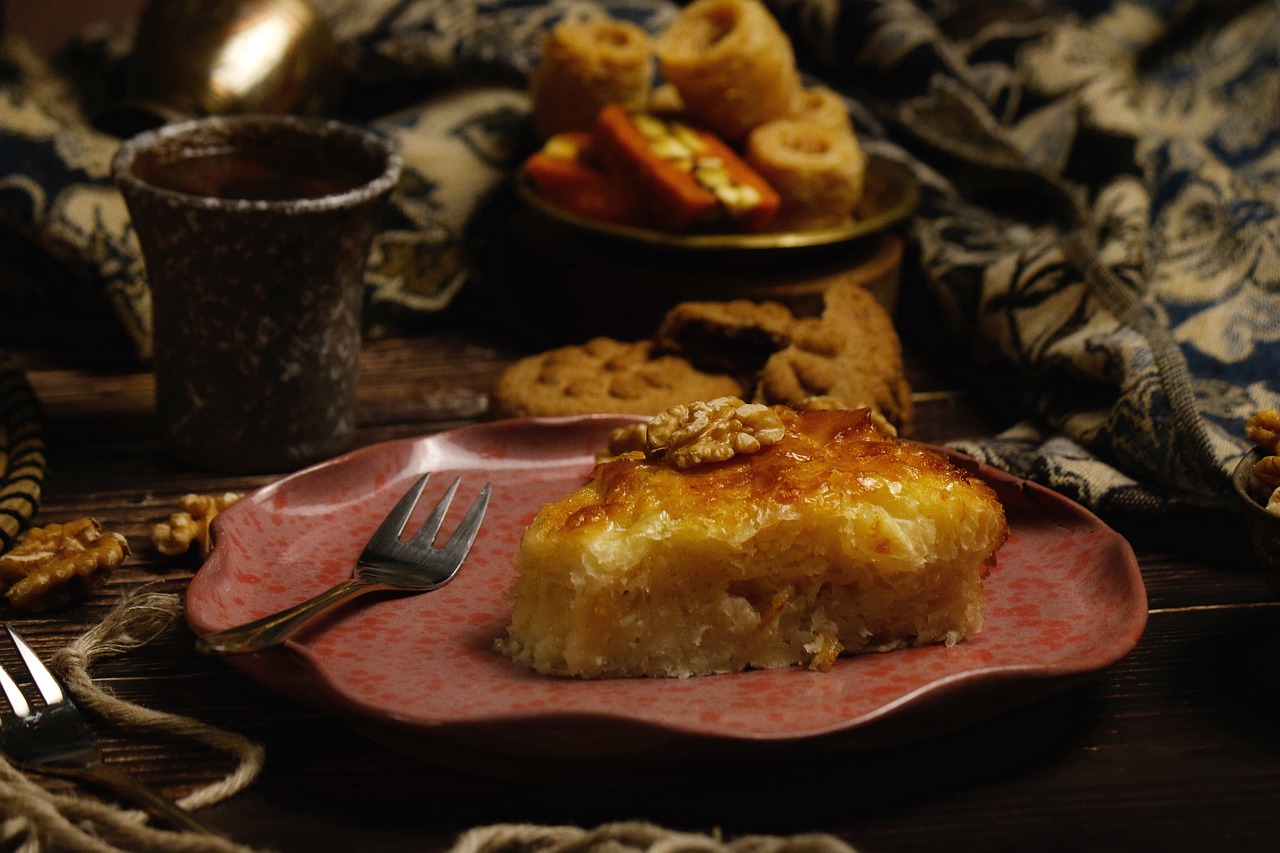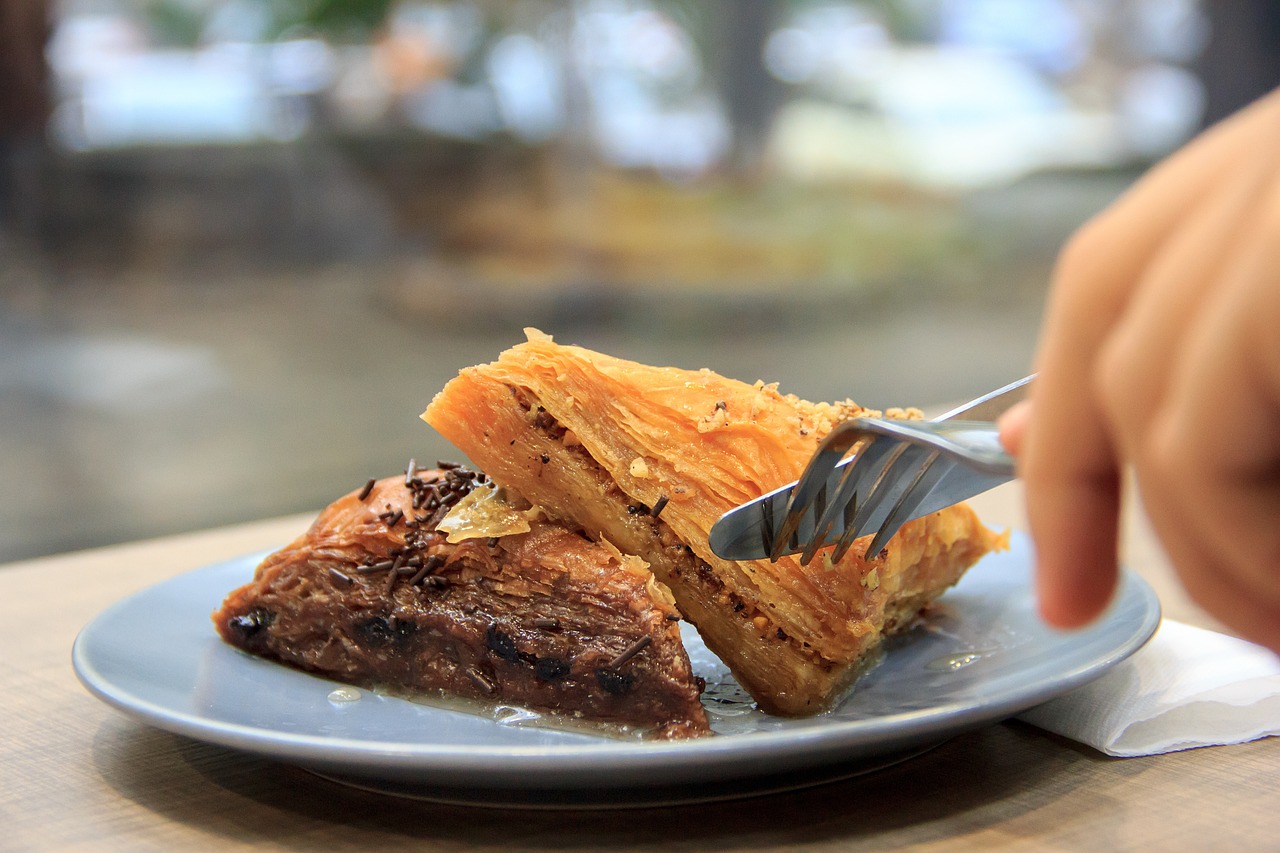Greek Baklava Bonanza: Layers of Sweetness

Indulge in the delectable world of Greek baklava, where layers of sweetness await to tantalize your taste buds. Picture a dessert that combines the crispiness of phyllo dough with the richness of nuts and the sweetness of syrup – that's the magic of baklava. As you embark on a culinary journey through the history, ingredients, and variations of this traditional Greek delight, get ready to be swept off your feet by its irresistible charm.
- Discover the rich history of baklava, a dessert that dates back to the days of the Ottoman Empire, where it was enjoyed by sultans and commoners alike. Witness how this humble pastry evolved into a symbol of Greek hospitality and celebration, passed down through generations with love and care.
- Uncover the secrets behind the ingredients that make baklava so special. From layers of delicate phyllo dough brushed with butter to a generous filling of crunchy nuts, every component plays a crucial role in creating the perfect balance of flavors and textures.
- Explore the myriad regional variations of baklava that showcase the diverse culinary landscape of Greece. Whether you prefer the classic combination of walnuts and cinnamon or crave a modern twist with pistachios and honey, there's a baklava style to suit every palate.
- Learn the art of serving baklava with flair, whether you're hosting a lavish dinner party or simply craving a sweet treat. Pair this decadent dessert with a steaming cup of coffee or a glass of dessert wine to elevate your dining experience to new heights.
As you delve into the world of Greek baklava, prepare to be amazed by the layers of sweetness that await you. Each bite is a symphony of flavors, a celebration of tradition, and a testament to the culinary mastery of the Greek people. So, grab a piece of baklava, savor its heavenly taste, and let yourself be transported to a world where sweetness reigns supreme.
History of Baklava
Delve into the rich history of baklava, a dessert with roots that stretch back to the opulent days of the Ottoman Empire. Imagine the bustling markets filled with the aroma of freshly baked pastries, each layer telling a story of centuries past. Baklava's journey to becoming a beloved treat in Greek cuisine is a tale of cultural fusion and culinary mastery.
Legend has it that baklava was first created in the lavish kitchens of the Topkapi Palace, where skilled chefs crafted delicate layers of phyllo dough, nuts, and honey into a decadent dessert fit for sultans. Over time, this sweet delight made its way to the bustling streets of Istanbul and beyond, captivating hearts and taste buds along the way.
As the recipe traveled across borders and generations, each culture added its own twist, transforming baklava into a symbol of shared heritage and indulgence. In Greece, the dessert took on new flavors and forms, blending local ingredients with traditional techniques to create a unique variation that is cherished to this day.
Today, biting into a piece of baklava is like taking a bite out of history, with each layer representing a chapter in the dessert's fascinating story. From the flaky phyllo dough to the crunchy nuts and sweet syrup, every bite is a symphony of flavors that transports you to a time of opulence and extravagance.
Ingredients and Preparation
When it comes to the irresistible Greek baklava, the key lies in its exquisite ingredients and meticulous preparation. This delectable dessert is a harmonious blend of flavors and textures, creating a symphony of sweetness in every bite.
At the heart of baklava lies the delicate layers of phyllo dough, brushed with melted butter to achieve that perfect crispiness. These thin sheets of pastry are carefully stacked to create a flaky texture that contrasts beautifully with the rich filling.
The filling of baklava typically consists of a generous amount of chopped nuts, such as walnuts or pistachios, mixed with aromatic spices like cinnamon and cloves. This nutty mixture adds a crunchy texture and a depth of flavor that complements the buttery phyllo layers.
To sweeten the deal, a fragrant syrup made from sugar, water, and a hint of lemon is poured over the baked baklava, soaking into every layer and infusing the dessert with a luscious sweetness. This syrupy finish is what gives baklava its signature moist and sticky consistency.
For those looking to recreate this indulgent treat at home, a step-by-step guide is essential. From carefully layering the phyllo dough to evenly spreading the nut mixture, each step requires precision and patience to ensure the perfect balance of flavors and textures.
Whether enjoyed as a decadent dessert for special occasions or a delightful treat with a cup of Greek coffee, baklava never fails to impress with its intricate layers of sweetness. The art of baklava-making is a labor of love, resulting in a dessert that is as visually stunning as it is delicious.
Regional Variations
When it comes to Greek baklava, the regional variations offer a delightful journey through diverse flavors and textures. Let's explore some of the unique renditions of this beloved dessert:
- Classic Walnut and Cinnamon: This traditional variation features a rich filling of walnuts, cinnamon, and a hint of cloves, creating a warm and comforting flavor profile.
- Pistachio and Orange Blossom: A modern twist on baklava, this version incorporates pistachios for a vibrant green color and a subtle nuttiness, complemented by the fragrant essence of orange blossom water.
- Almond and Cardamom: In some regions, baklava is prepared with a filling of almonds and aromatic cardamom, adding a unique spiced undertone to the layers of phyllo dough.
Each regional variation reflects the local ingredients and culinary traditions, offering a glimpse into the diverse gastronomy of Greece. Whether you prefer the classic combination of walnuts and cinnamon or are intrigued by the fusion of pistachios and floral notes, there is a baklava variation to suit every palate.
Serving and Pairing Suggestions
When it comes to serving and pairing Greek baklava, there are a few key tips to ensure you elevate the experience to new heights. Whether you are indulging in this sweet treat on a special occasion or simply enjoying it with a cup of coffee, the right presentation and pairing can make all the difference.
Here are some serving and pairing suggestions to enhance your baklava experience:
- Serving Suggestions:
- 1. Serve baklava on a decorative platter or individual dessert plates to showcase its intricate layers.
- 2. Dust the top of the baklava with a sprinkle of ground nuts or powdered sugar for a visually appealing finish.
- 3. Accompany baklava with a dollop of Greek yogurt or a scoop of vanilla ice cream for a creamy contrast.
- 4. Garnish with a few whole nuts or a drizzle of honey to add a touch of elegance to your presentation.
- Pairing Suggestions:
- 1. Enjoy baklava with a strong cup of Greek coffee for a classic pairing that brings out the dessert's rich flavors.
- 2. Pair baklava with a glass of sweet dessert wine, such as a Muscat or a late-harvest Riesling, to complement its sweetness.
- 3. For a refreshing contrast, serve baklava with a glass of chilled ouzo or a traditional Greek liqueur.
- 4. Consider pairing baklava with a hot cup of herbal tea for a cozy and comforting combination.
By paying attention to the presentation and pairing of your Greek baklava, you can create a truly memorable culinary experience that tantalizes the taste buds and delights the senses. Whether you opt for a traditional serving style or experiment with creative pairings, the key is to savor every bite of this delectable dessert.



 HazalVardal
HazalVardal 





